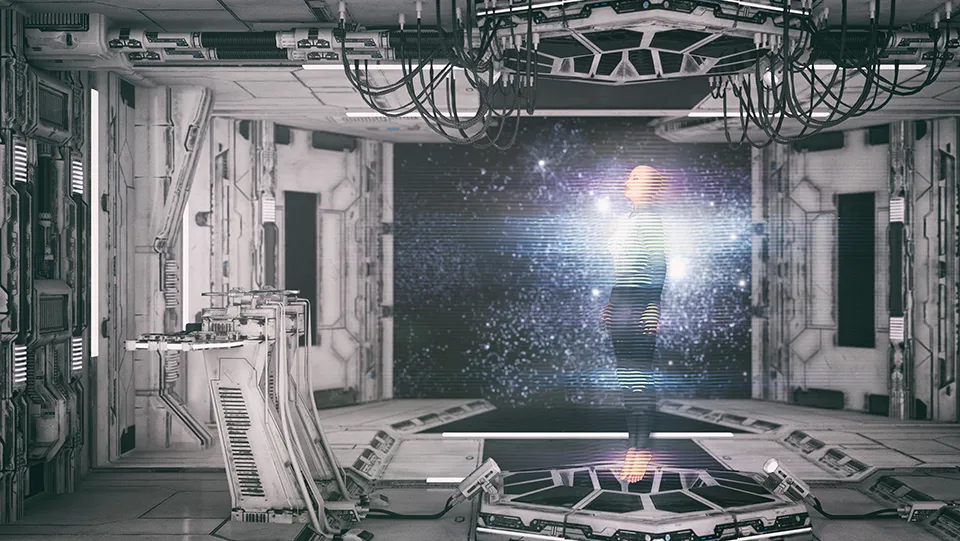1
Learning by plugging in (The Matrix)
Author Malcolm Gladwell’s theory is that all successful people will have spent at least 10,000 hours practicing their skill, but who has time for that? What we want is to 'plug in' to the Matrix like Neo did, and become a martial arts expert overnight.

Dr Peter Földiák, School of Psychology and Neuroscience, University of St Andrews: “This is probably theoretically possible but there are huge scientific and technical problems that need to be solved before this can be done in practice. To 'implant' knowledge directly into the brain, we would need a much better understanding of how information is stored in the brain by neurons, as well as precise mechanisms tapping into those neurons with new information. So while a lot of progress is being made in understanding how the brain works, the actual process of 'knowledge implantation' is unfortunately a very distant dream.”
Read more:
- Future technology: 22 ideas about to change our world
- Dude, where’s my flying car? 11 future technologies we’re still waiting for
2
Holodecks (Star Trek)
Star Trek’s holodeck is a simulated reality facility in which objects and people are conjured up using a variety of futuristic technologies such as tractor beams and holograms. So could this be the future of gaming?

Mark Bolas, Director, Mixed Reality Lab at the Institute of Creative Technology, University of Southern California: “If the goal is to make someone feel like their senses are immersed in an alternate world, then we do this every day at the Mixed Reality Lab by adapting technology that is already available. This involves using head-mounted displays to present the user with stereoscopic images... But while we are already working on technology that projects images into the real world without the need for a head-mounted display, I feel this is further away."
3
Invasion of dreams (Inception)
The 2010 Oscar-winning blockbuster Inception featured Leonardo DiCaprio as Dom Cobb, a thief who commits corporate espionage by infiltrating the subconscious of his targets. It’s not the first time that science fiction has centred on removing or implanting memories through dreams (see Total Recall or Eternal Sunshine of the Spotless Mind), but could it ever happen in real life?
Prof Jan Schnupp, Dept. of Physiology, Anatomy and Genetics, University of Oxford: “All mental activity, including dreams, is the product of billions of neurons in our heads. The main obstacle is how we intercept enough of the signals to get a clear picture of what is going on in a dream. With current technology, implanting microelectrodes into the brain is the only way to read this activity with sufficient detail – but you would quite possibly need thousands of them, which means drilling numerous holes in your head. The ethical and legal hurdles would make this extremely difficult. At present, there are no less invasive technologies on the horizon, so for the foreseeable future your dreams are safe from prying eyes.”
4
Hoverboards (Back to the Future)
We’ve wanted a hoverboard ever since we were kids and saw them in Back to the Future Part II and Part III, and it seems we’re not the only ones. Several companies and individuals have drawn on hovercraft technology in their attempts to create hoverboard-like products, but none have demonstrated similar experiences to those depicted in the movies... yet.
Prof Phil Blythe, Chair of the Transport Policy Panel, The Institution of Engineering and Technology: “This technology is decades away, perhaps up to 20 years, but hopefully we will develop this as a stepping stone to flying cars.”
5
Jet packs (James Bond)
Jet packs first appeared in science fiction in the 1920s, and became popular in the 1960s when Sean Connery’s Bond used one in the title sequence of Thunderball. We can’t imagine why they haven’t been invented yet – imagine how useful they’d be to the military, or for that matter to us, for popping out to get a pint of milk.
David Evans, Chair of the Innovation Panel, The Institution of Engineering and Technology: “It will be a very long time before we see a working and commercially available jet pack on the market, perhaps never. There are lots of big issues about the energy source used to power it, and then controlling stability in motion, not to mention safety, the environmental impact and the public acceptability in practice.”
6
Self-driving cars (Knight Rider)
Fancy putting your feet up and reading a good book as you travel from A to B? Self-driving cars are a regular feature in science fiction films and series such as Knight Rider and Total Recall, and the opportunity to pick one up at your local garage forecourt is closer than you think.
David Evans, Chair of the Innovation Panel, The Institution of Engineering and Technology: “Self-driving cars have been demonstrated by car manufacturers on their private test tracks already – so the issue is how long it will take for the technologies to become affordable and trusted by the public. My guess is that this may well happen over the next 10-20 years, since some cars have lots of the components in place already, such as satellite navigation systems, cruise control and automatic parking.”
- This article was first published in 2013.
Follow Science Focus onTwitter,Facebook, Instagramand Flipboard